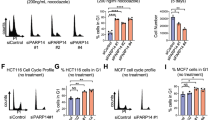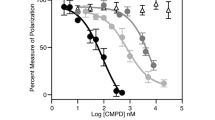Abstract
The retinoblastoma tumor suppressor protein has been shown to bind directly and inhibit a transcriptionally-important amino-terminal kinase domain of TATA-binding protein-associated factor TAFII250. Cyclin D1 also is able to associate with the amino terminus of TAFII250 in a region very similar to or overlapping the Rb-binding site. In this study, we have examined whether cyclin D1 affects the functional interaction between Rb and TAFII250. We observed that when cyclin D1 is co-incubated with Rb and TAFII250, the ability of Rb to inhibit TAFII250 kinase activity is effectively blocked. However, cyclin D1 by itself has no apparent effect on TAFII250 kinase activity. We further found that the Rb-related protein p107 can inhibit TAFII250 kinase activity, and this inhibition is likewise alleviated by cyclin D1. Cyclin D1 prevents the kinase-inhibitory effect of an Rb mutant unable to bind to D-type cyclins, indicating that it is acting through its association with TAFII250 and not with Rb. However, we found no evidence of TAFII250-binding competition between Rb and cyclin D1 in vitro. The adenovirus E1A protein, which also binds to both Rb and TAFII250, exhibited a suppressive effect on Rb-mediated kinase inhibition similar to that seen with cyclin D1. Our results suggest a novel means by which cyclin D1 may be able to independently regulate the activity of Rb.
This is a preview of subscription content, access via your institution
Access options
Subscribe to this journal
Receive 50 print issues and online access
$259.00 per year
only $5.18 per issue
Buy this article
- Purchase on Springer Link
- Instant access to full article PDF
Prices may be subject to local taxes which are calculated during checkout






Similar content being viewed by others
References
Adnane J, Shao Z and Robbins PD. . 1995 J. Biol. Chem. 270: 8837–8843.
Adnane J, Shao Z and Robbins PD. . 1999 Oncogene 18: 239–247.
Brehm A, Miska EA, McCance DJ, Reid JL, Bannister AJ and Kouzarides T. . 1998 Nature 391: 597–601.
Bremner R, Cohen BL, Spota M, Hamel PA, Ingles CJ, Gallie BL and Phillips RA. . 1995 Mol. Cell. Biol. 15: 3256–3265.
Castano E, Kleyner Y and Dynlacht BD. . 1998 Mol. Cell. Biol. 18: 5380–5391.
Chen PL, Ueng YC, Durfee T, Chen KC, Yang-Feng T and Lee W-H. . 1995 Cell Growth Diff. 6: 199–210.
Dikstein R, Ruppert S and Tjian R. . 1996 Cell 84: 781–790.
Dyson N. . 1998 Genes Dev. 12: 2245–2262.
Ewen ME, Sluss HK, Sherr CJ, Hitoshi M, Kato J-Y and Livingston DM. . 1993 Cell 73: 487–497.
Finkelstein A, Kostrub CF, Li J, Chavez DP, Wang BQ, Fang SM, Greenblatt J and Burton ZF. . 1992 Nature 355: 464–467.
Flemington EK, Speck SH and Kaelin Jr WG. . 1993 Proc. Natl. Acad. Sci. USA 90: 6914–6918.
Geisberg JV, Chen JL and Ricciardi RP. . 1995 Mol. Cell. Biol. 15: 6283–6290.
Gu W, Schneider JW, Condorelli G, Kaushal S, Mahdavi V and Nadal-Ginard B. . 1993 Cell 72: 309–324.
Hahn S. . 1998 Cell 95: 579–582.
Harlow E and Lane D. . 1988 Antibodies: A Laboratory Manual. Cold Spring Harbor Laboratory Press, Cold Spring Harbor, NY.
Hayashida T, Sekiguchi T, Noguchi E, Sunamoto H, Ohba T and Nishimoto T. . 1994 Gene 141: 267–270.
Helin K, Harlow E and Fattaey A. . 1993 Mol. Cell. Biol. 13: 6501–6508.
Hisatake K, Hasagawa S, Takada R, Nakatani Y, Horikoshi M and Roeder RG. . 1993 Nature 362: 179–181.
Hunter T and Pines J. . 1994 Cell 79: 573–582.
Inoue K and Sherr CJ. . 1998 Molec. Cell. Biol. 18: 1590–1600.
Kaelin Jr WG, Pallas DC, Decaprio JA, Kaye FJ and Livingston DM. . 1991 Cell 64: 521–532.
Kitajima S, Chibazakura T, Yonaha M and Yasukochi Y. . 1994 J. Biol. Chem. 269: 29970–29977.
Lei L, Ren D, Finkelstein A and Burton ZF. . 1998 Mol. Cell. Biol. 18: 2130–2142.
Luo RX, Postigo AA and Dean DC. . 1998 Cell 92: 463–473.
Magnaghi-Jaulin L, Groisman R, Naguibneva I, Robin P, Lorain S, Le Villain JP, Troalen F, Trouche D and Harel-Bellan A. . 1998 Nature 391: 601–604.
Mizzen CA, Yang X-J, Kokubo T, Brownell JE, Bannister AJ, Owen-Hughes T, Workman J, Wang L, Berger SL, Kouzarides T, Nakatani Y and Allis CD. . 1996 Cell 87: 1261–1270.
Mulligan G and Jacks T. . 1998 Trends Genet. 14: 223–229.
Neuman E, Ladha MH, Lin N, Upton TM, Miller SJ, Direnzo J, Pestell RG, Hinds PW, Dowdy SF, Brown M and Ewen ME. . 1997 Mol. Cell. Biol. 17: 5338–5347.
O'Brien T and Tjian R. . 1998 Mol. Cell. 1: 905–911.
O'Brien T and Tjian R. . 2000 Proc. Natl. Acad. Sci. USA 97: 2456–2461.
Ross JF, Liu X and Dynlacht BD. . 1999 Mol. Cell. 3: 195–205.
Ruppert S and Tjian R. . 1995 Genes Dev. 9: 2747–2755.
Ruppert S, Wang EH and Tjian R. . 1993 Nature 362: 175–179.
Rushton JJ, Steinman RA and Robbins PD. . 1997 Cell Growth Diff. 8: 1099–1104.
Sanchez I and Dynlacht BD. . 1996 Curr. Opin. Cell Biol. 8: 318–324.
Sekiguchi T, Nishimoto T and Hunter T. . 1999 Oncogene 18: 1797–1806.
Sellers WR, Novitch BG, Miyake S, Heith A, Otterson GA, Kaye FJ, Lassar AB and Kaelin Jr WG. . 1998 Genes Dev. 12: 95–106.
Sellers WR, Rodgers JW and Kaelin Jr WG. . 1995 Proc. Natl. Acad. Sci. USA 92: 11544–11548.
Shao Z and Robbins PD. . 1995 Oncogene 10: 221–228.
Shao Z, Ruppert S and Robbins PD. . 1995 Proc. Natl. Acad. Sci. USA 92: 3115–3119.
Shao Z, Siegert JL, Ruppert S and Robbins PD. . 1997 Oncogene 15: 385–392.
Siegert JL and Robbins PD. . 1999 Mol. Cell. Biol. 19: 846–854.
Suzuki-Yagawa Y, Guermah M and Roeder RG. . 1997 Mol. Cell. Biol. 17: 3284–3294.
Tansey WP and Herr W. . 1997 Cell 88: 729–732.
Wang EH and Tjian R. . 1994 Science 263: 811–814.
Weinberg RA. . 1995 Cell 81: 323–330.
Weintraub SJ, Chow KNB, Luo RX, Zhang SH, He S and Dean DC. . 1995 Nature 375: 812–815.
Weinzierl RO, Dynlacht BD and Tjian R. . 1993 Nature 362: 511–517.
Whyte P, Buchkovich KJ, Horowitz JM, Friend SH, Raybuck M, Weinberg RA and Harlow E. . 1988 Nature 334: 124–129.
Woo MS-A, Sanchez I and Dynlacht BD. . 1997 Mol. Cell. Biol. 17: 3566–3579.
Zwijsen RM, Wientjens E, Klompmaker R, van der Sman J, Bernards R and Michalides RJ. . 1997 Cell 88: 405–415.
Acknowledgements
This work was supported by a public health service grant (55227) from the National Cancer Institute to PD Robbins and by a predoctoral research training grant from the United States Army to JL Siegert. We thank Z Shao and J Adnane for reagents and critical work leading up to this study. We would also like to thank M Ewen and C McMahon for kindly providing the cyclin D1 baculovirus, R Tjian and S Ruppert for providing TAFII250 expression constructs, Z Burton and L Lei for the RAP74 construct, and D Rowe for supplying the E1A construct.
Author information
Authors and Affiliations
Rights and permissions
About this article
Cite this article
Siegert, J., Rushton, J., Sellers, W. et al. Cyclin D1 suppresses retinoblastoma protein-mediated inhibition of TAFII250 kinase activity. Oncogene 19, 5703–5711 (2000). https://doi.org/10.1038/sj.onc.1203966
Received:
Revised:
Accepted:
Published:
Issue Date:
DOI: https://doi.org/10.1038/sj.onc.1203966
Keywords
This article is cited by
-
The Impact of Long-Term In Vitro Expansion on the Senescence-Associated Markers of Human Adipose-Derived Stem Cells
Applied Biochemistry and Biotechnology (2012)
-
Cyclin D as a therapeutic target in cancer
Nature Reviews Cancer (2011)
-
Gene expression profiling of monkeypox virus-infected cells reveals novel interfaces for host-virus interactions
Virology Journal (2010)
-
Transactivation mediated by B-Myb is dependent on TAFII250
Oncogene (2003)



